I’ve just returned from Psychedelic Science 2025, the largest psychedelic conference in the world. While the theme for this year was “integration,” I find myself still putting pieces of myself back together that were blown open by the shockingly immense doorway this event opened for me.
Think Burning Man meets a professional conference meets a city-wide takeover consisting of hundreds of parties and networking events. I’ve never been to an event like it. And this year, the conference was extremely kind to me.
I’ve been involved in the psychedelic world, in one way or another, for about 18 years. I’ve seen trends come and go, and have also dug deep into the historical and cultural groundwater of this movement, examining its roots in the countercultural revolution of the 1960’s, as well as deep time spent studying Indigenous traditions of shamanic plant medicine and healing.
I say this in the most humble way possible: I’ve been around for a minute.
Taking into account the larger arc of the psychedelic movement, as well as where we all currently find ourselves in this uncertain precipice of the times, also called the “polycrisis,” I offer these reflections on my experience at Psychedelic Science 2025 as a way to name the ways I see this movement maturing. Of course, there is always room for critique. But today, I want to celebrate something that truly does feel like a significant moment in my life, and I hope the life of many others.
Before we go any further, I want to invite you to my monthly Mythopoetic Integration Circle. Paid subscribers gain access to this monthly live call, along with my entire archive and exclusive audio content. Our next Mythopoetic Integration Circle will take place on Wednesday, July 16th at 11am PST.
Depth
In 2023, with around 12,000 attendees, Psychedelic Science was (and remains) the largest psychedelic conference in history. Two years ago, the psychedelic bubble was in full effect. Microdosing companies appeared out of nowhere like an overnight fungal flush, million dollar investment deals were being signed, and the FDA’s approval of MDMA-assisted therapy seemed like an inevitability.
Oregon’s rollout of the nation’s first state-regulated model for psychedelic healing was receiving national attention, and a new tide of wide-eyed enthusiasts, hungry for wisdom and chemical enlightenment, flocked towards the movement like moths towards a flame.
Thankfully, that time has passed. It’s fair to say the bubble has burst. And I am quite ok with that.
From what I could tell, unlike 2023, this year seemed to attract a crop of more focused, sincere, and grounded attendees. Most people I talked to had a cultivated relationship to psychedelic medicines, therapy, or culture that took root many years before the recent “Pollanization” of the movement. There were noticeably less hucksters slanging ampoules of nano-particle submersed psilocin, and to the relief of everyone, far fewer microdosing gurus.
The programming of the conference also reflected this move towards depth, rather than breadth. Full-day summits for niche audiences, like the Psychedelic Jewish Summit, workshops on right relationship with Indigenous peoples, and scientific presentations were on offer for those wanting to go deep. Panels took on more critical tones, like the “Ketamine Reality Check,” as well as many other discussions highlighting the peaks and pitfalls of psychedelics.
My own involvement consisted of a panel discussion on psychedelics and death, as well as a shorter book talk at the bookstore, hosted by the good people of Synergetic Press.
To offer even one talk about grief and death at this event struck me as a clear indication of a tonal shift underlying the psychedelic movement, one that I feel corresponds to the unfolding tragedies and systemic collapses that permeate our times. To make space for grief in an emerging, excitable field is a bold move, yet a sign that the movement is finally starting to come down from its high, and take stock of the situation beneath our feet.
Down here, there is darkness and fertility, hungry ghosts and wise ancestors, grief and praise. This was the ground I was asked to speak to. And truth be told, I felt woefully unqualified to do so. Still, it was an immense honor to walk onto that stage and carve out a small slice of time and space for people to wonder together about the soul.
Elders
Multigenerationality is not something that our culture does well. We sequester our elders into the stifling halls of care homes, or they sequester themselves, no longer engaged in the goings on of “the young folk.”
We are all the more culturally bereft because of it.
One of the core functions of elders in any community is to see, uplift, and essentially bless the younger generation. They serve as initiatory gatekeepers, healers, and wizened guides who have traversed pathways the youth can only imagine. Especially in a wild, untrodden field like psychedelics, the importance of these exchanges, these intangible acknowledgements and transmissions of wisdom, cannot be overstated.
The week began with a celebration of what would have been Sasha Shulgin’s 100th birthday. Sasha, and his late wife Ann, were pivotal figures in the birth of modern psychedelic culture. In the late 1970’s, Sasha revived a relatively unknown molecule, introducing a truly remarkable compound into the burgeoning “human potential” and psychotherapy movements of the West Coast and beyond. That molecule was MDMA.
It is fair to say that the underground raves of the 1990’s, which gave rise to the global phenomenon of underground electronic dance music, and is now sold in a sterilized package at every major festivals around the world, was a direct result of Sasha’s chemical synthesis, performed in an overgrown garden shed just over the Berkeley hills.
On his birthday tribute, a long line of psychedelic luminaries, artists, scholars, and elders stood and praised Sasha and Ann in what was one of the most moving tributes to a psychedelic cultural hero I’ve ever seen. Today, their farm and legacy is stewarded by the good folks at the Shulgin Foundation.
Throughout the conference, I was fortunate enough to cross paths with many elders in the field–people who all of us involved in the “psychedelic renaissance” owe an immense debt to.
People like Rhoney Gissen Stanley, wife of the famous LSD chemist Owsley “Bear” Stanley, who was responsible for “turning on” an entire generation in the 1960’s with his infamous “Orange Sunshine” and "Monterey Purple” acid.
Rhoney, whose book, Owsley and Me: My LSD Family, documents her wild and historical life, sat down front and center at my book talk at the Synergetic Press bookstore. For the entire duration of my talk, her blue eyes were locked into mine, nodding along with me in complete sync. Later that day, we caught up in the halls of the conference, where she shared her appreciation for what she had heard. What she reflected to me in that moment felt like a blessing from a woman whose impact on psychedelic counterculture goes deeper than I could ever comprehend.
I was fortunate to connect with many other beloved elders as well, people whose lives and work has profoundly impacted me and the wider field. People like William Leonard Pickard, Maria Mangini, Deborah Snyder, Paul Daley, and many others.
Even more than my peers, who I love deeply, it was my connections with these elders of the psychedelic field that has left the most profound impacts on me.
Community
The internet is a strange thing.
You can “know” someone online for years, collaborate on projects, and share hilarious memes that make both of you cry laughing. But you hardly ever occupy the same physical space. Your connection is relegated to the digital hallways of social media. And yet, relationships flourish.
This may be the single most redeeming element of social media.
Seasonal gatherings and festivals were a mainstay of many traditional cultures, especially those tied to agricultural and solar cycles. Traditionally speaking, marriages, trade, peace treaties, and spiritual guidance and renewal would emerge out of these cyclical gatherings. In our hyper-connected, globalized world, we forget the importance of large-scale gatherings for nurturing culture and community.
This ancient element of human society was one of the main reasons that “festival culture” drew me in so many years ago, and why I devoted the majority of my 20’s to this wild and untethered lifestyle. Large scale gatherings nourished some primordial element of my body, mind, and spirit.
But now, we all find ourselves in strikingly different times.
So, the unique amalgamation of the “psychedelic conference” fits the bill for an era that demands a level of intentionality and focus, and a dedication towards building community with something that approximates a shared mission, vision, and set of values.
That’s the hope, anyways…
The 9,000 person convergence of Psychedelic Science offered an opportunity to step into this festival-like space of community renewal. I connected with an untold number of dear friends and colleagues, many of whom I’ve only met once or twice in person, or people who I adore but had never met in person.
Some people I only see at conferences of this sort. Its a unique, tangled web of relationships, and I am all the better for it.
And while I wish society was structured in a way where we lived in a network of interconnected villages that prioritized these culturally enriching ways of coming together, I am grateful for the small glimpses of community that this conference offered to so many, myself included.
Thank you for reading. As always, please like, share, and comment to your heart’s content.
Also, consider becoming a paid subscriber to gain access to monthly Mythopoetic Integration Circle calls, my full archive, and much more.


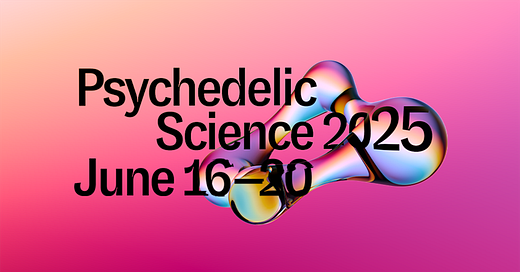



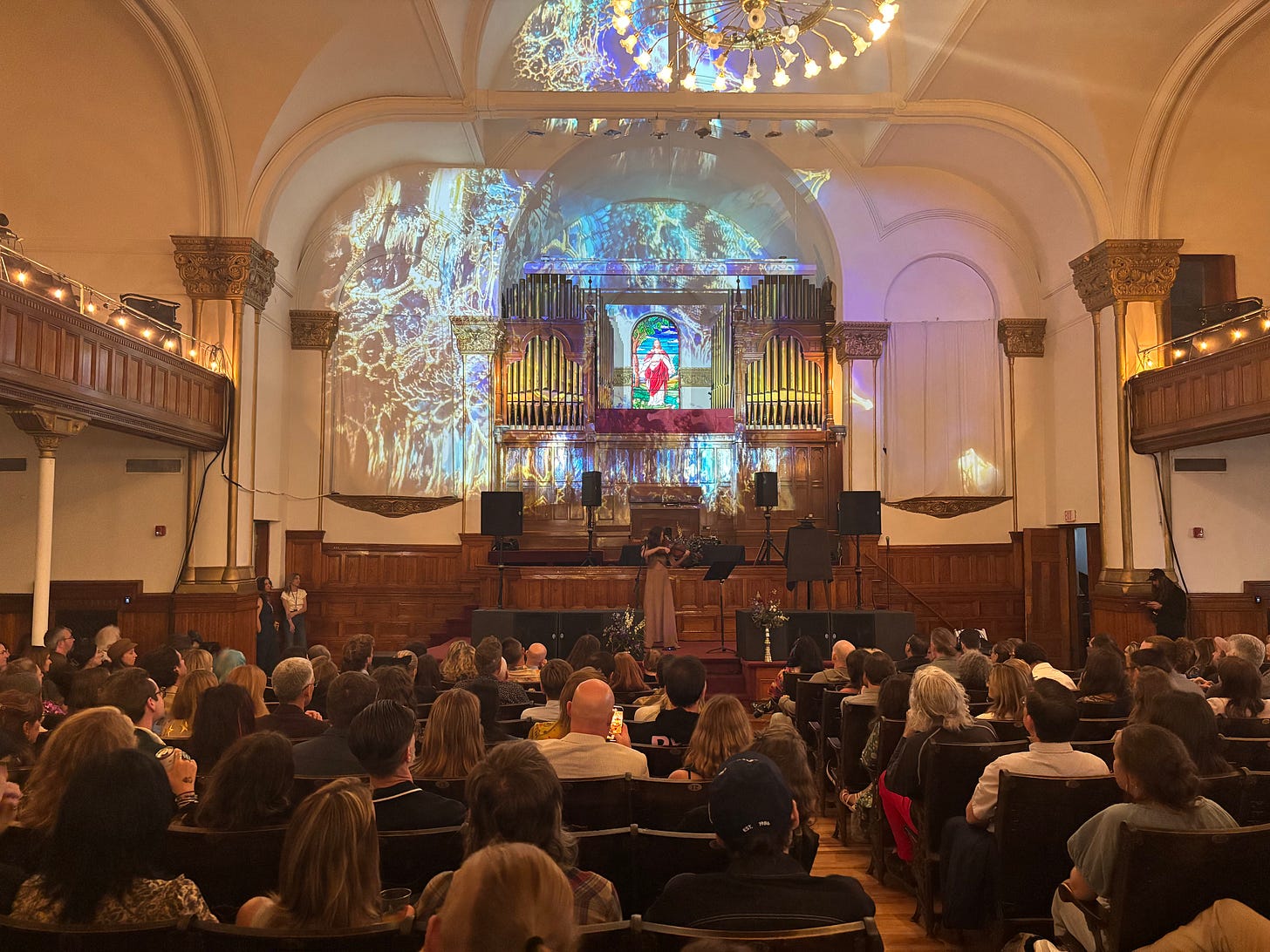
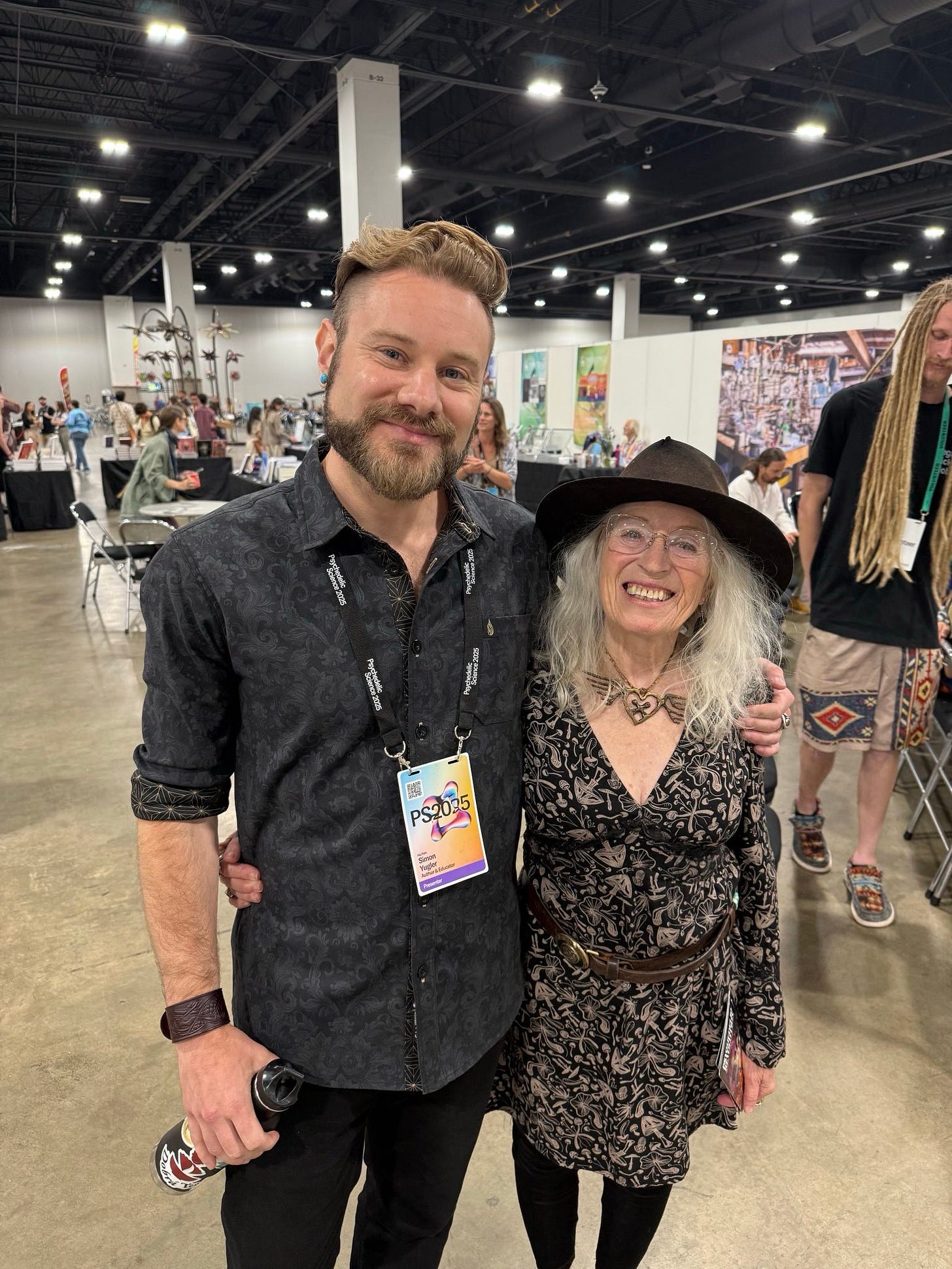
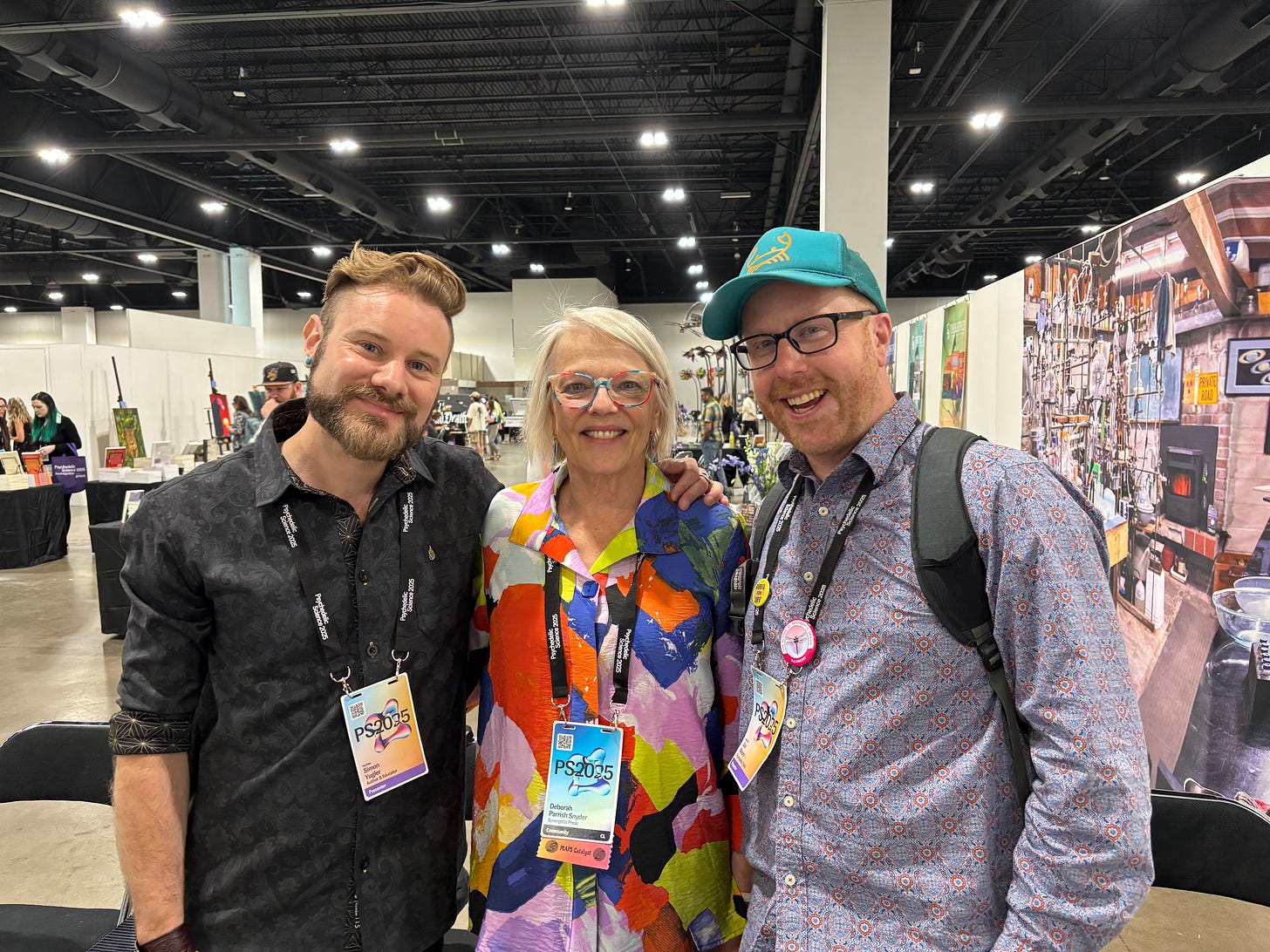
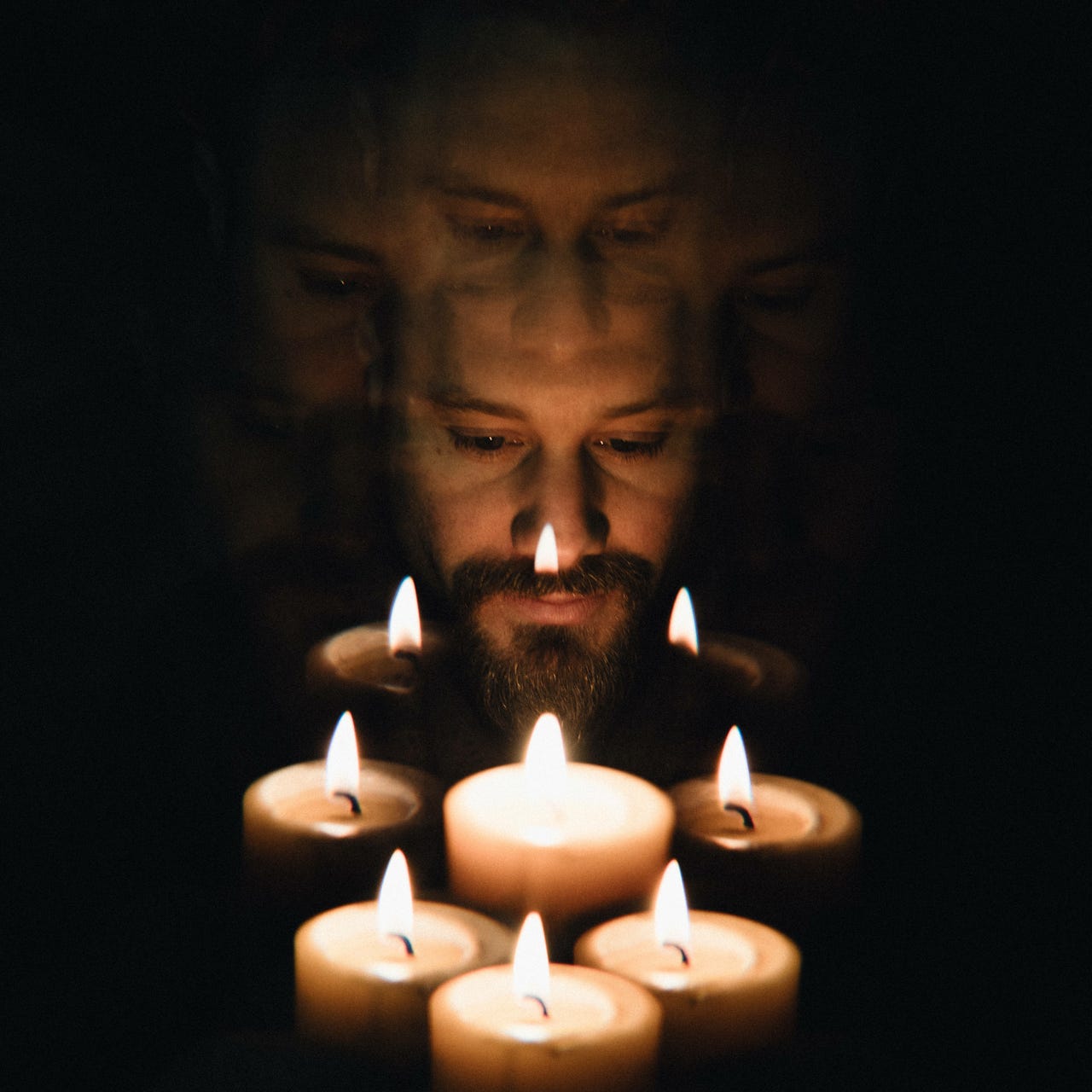
Thanks Simon for sharing a peak behind the curtain. I had tears well up, for the depth of meaningfulness and loving connections you enjoyed, for the significance and 'undeniability' of a community who have been deep diving for decades, some falling into the shadows and others skating along the fringes of 'cultural and political approval', who are now seemingly coming into an age of maturity and togetherness as you describe it, of taking stock and making sense of the contribution that it's possible to make in a world waking up afraid of the mess it's unconscious has made. The light and the dark of the movement are seeing each other more clearly perhaps, learning to dance as one, how wonderful. Makes me want to order an early bird ticket for next time.
I love that you're hanging out with Rhoney Gissen Stanley. I'm not jealous at all. 🤪